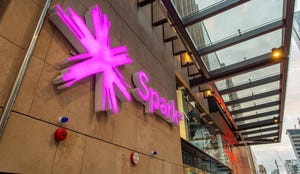Cisco Goes Greenfield
Boosting its metro Ethernet story, Cisco grabs Ethernet chip startup Greenfield Networks for an undisclosed sum

Founders of Ethernet chip vendor Greenfield Networks are getting a second go-around with Cisco Systems Inc. (Nasdaq: CSCO), which announced today it's acquired the startup for an undisclosed sum.
Greenfield's four founders hailed from Grand Junction Networks, a 1995 Cisco acquisition. They added a fifth Grand Junctioneer, Bill Rossi, to take over as CEO when initial chief exec Gary Smeardon left to join a solar-energy startup. (See Grand Junction Vets Go Greenfield and Greenfield Hires Another Cisco Vet.)
Terms of the deal were not disclosed. Cisco plans to pick up most of Greenfield's 60 employees, but Rossi won't be among them. Cisco isn't elaborating. "It was just part of the deal," says Rob Salvagno, a director in Cisco's business development team.
Cisco doesn't typically spell out the origins of its acquisitions, but Salvagno did note that the Grand Junction link was not the key to getting this deal started. Grand Junction got acquired into Cisco a long time ago, and the resulting products, including the Catalyst 2900 and 3550, live on.
Cisco liked Greenfield's achievements in "developing configurable silicon that focuses on metro Ethernet features," Salvagno says. Cisco isn't giving many details about how the chips might be used, but they'll be going into desktop and modular switching systems, he notes.
Greenfield was founded in 2001 to produce Ethernet switching chips, taking on Ethernet chip giants Broadcom Corp. (Nasdaq: BRCM) and Marvell Technology Group Ltd. (Nasdaq: MRVL) as well as a host of competitors including Agere Systems Inc. (NYSE: AGR.A), SwitchCore AB (Stockholm: SCOR), and Vitesse Semiconductor Corp. (Nasdaq: VTSS).
Greenfield's pitch was that its parts were better suited for metro Ethernet, whereas the best-known Ethernet chips were aimed primarily for the enterprise market, not for carriers. Moreover, Greenfield's parts added some Layer 3 know-how, giving them some characteristics of a network processor.
Other companies were moving in that direction, too, however. Before Greenfield had launched, Switchcore and Vitesse had made a point of putting Layer 3 functions into their Ethernet switch chips, and Broadcom followed suit soon after. (See Broadcom Targets Metro Ethernet.)
Being more complex than many Ethernet chips, Greenfield's parts required lots of software savvy and backup, meaning it was a serious commitment for a systems vendor to adopt the chip. "The time to market takes so long for products in this range, that it made sense" for Greenfield join up with Cisco, says Kishore Jotwani, Greenfield's vice president of sales and marketing.
Greenfield had announced a couple of big customers in Asia, namely the H3C Technologies Co. Ltd. joint venture and Beijing Harbour Networks Co. Ltd. (See Huawei-3Com Picks Greenfield and Harbour Picks Greenfield.)
Naturally, Cisco won't be continuing to serve those companies. Jotwani says Greenfield has worked with them for finding alternatives. He wouldn't comment on either company's product status, but considering Greenfield's second-generation chip began shipping just this year, it's unlikely either company got too far into the product design cycle with it.
— Craig Matsumoto, Senior Editor, Light Reading
About the Author(s)
You May Also Like












